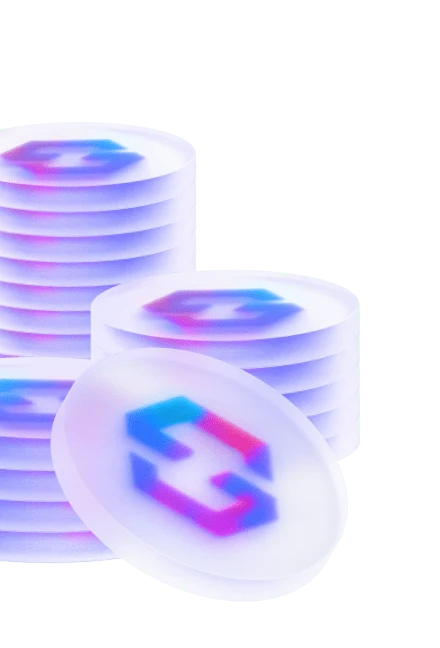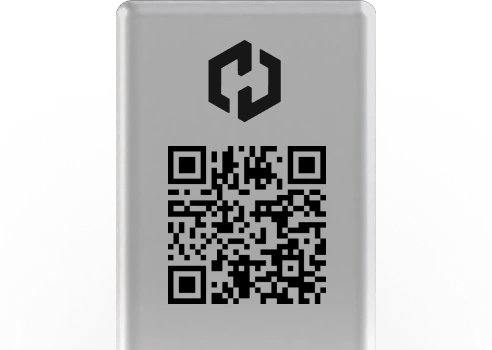Investir dans
la crypto avec Coinhouse
Rapport de durabilité
La nouvelle règle du jeu pour une finance responsable.

Depuis 2024, la réglementation européenne exige que chaque entreprise financière publie des indicateurs de durabilité qui offrent une vision transparente de l'impact environnemental de ses activités.
En quelques mots, ces indicateurs prouvent qu'une entreprise agit concrètement pour la planète.
Explorez ci-dessous les indicateurs de durabilité des crypto-actifs sélectionnés par notre plateforme.

Sustainability report
The new rule of the game for responsible finance.
Bitcoin (BTC)
General Information
| Reporting entity name | Coinhouse SAS |
| Legal Entity Identifier (LEI) | Company LEI |
| Crypto-asset name | Bitcoin |
| Consensus mechanism | Bitcoin is present on the following networks: Bitcoin, Lightning Network. |
| Incentive mechanisms and applicable fees | Bitcoin is present on the following networks: Bitcoin, Lightning Network. |
| Start of reporting period | 2024-06-22 |
| End of reporting period | 2025-06-22 |
Environmental (E)
| Total energy consumption (kWh/year) | 192680693582.23364 |
| Energy consumption sources and calculation methodologies | The energy consumption of this asset is aggregated across multiple components: |
| Share of renewable energy consumption (%) | 24.134702976 |
| Energy intensity (kWh/transaction) | 12.08492 |
| Scope 1 GHG emissions (tCO₂e) | 0.00000 |
| Scope 2 GHG emissions (tCO₂e) | 79383686.85039 |
| GHG emissions intensity (gCO₂e/tx) | 4.97894 |
| Key energy sources and methodologies | To determine the proportion of renewable energy usage, the locations of the nodes are to be determined using public information sites, open-source crawlers and crawlers developed in-house. If no information is available on the geographic distribution of the nodes, reference networks are used which are comparable in terms of their incentivization structure and consensus mechanism. This geo-information is merged with public information from Our World in Data, see citation. The intensity is calculated as the marginal energy cost wrt. one more transaction. |
| Key GHG sources and methodologies | To determine the GHG Emissions, the locations of the nodes are to be determined using public information sites, open-source crawlers and crawlers developed in-house. If no information is available on the geographic distribution of the nodes, reference networks are used which are comparable in terms of their incentivization structure and consensus mechanism. This geo-information is merged with public information from Our World in Data, see citation. The intensity is calculated as the marginal emission wrt. one more transaction. |
Bitcoin is present on the following networks: Bitcoin, Lightning Network.
The Bitcoin blockchain network uses a consensus mechanism called Proof of Work (PoW) to achieve distributed consensus among its nodes. Here’s a detailed breakdown of how it works: Core Concepts 1. Nodes and Miners: Nodes: Nodes are computers running the Bitcoin software that participate in the network by validating transactions and blocks. Miners: Special nodes, called miners, perform the work of creating new blocks by solving complex cryptographic puzzles. 2. Blockchain: The blockchain is a public ledger that records all Bitcoin transactions in a series of blocks. Each block contains a list of transactions, a reference to the previous block (hash), a timestamp, and a nonce (a random number used once). 3. Hash Functions: Bitcoin uses the SHA-256 cryptographic hash function to secure the data in blocks. A hash function takes input data and produces a fixed-size string of characters, which appears random. Consensus Process 1. Transaction Validation: Transactions are broadcast to the network and collected by miners into a block. Each transaction must be validated by nodes to ensure it follows the network’s rules, such as correct signatures and sufficient funds. 2. Mining and Block Creation: Nonce and Hash Puzzle: Miners compete to find a nonce that, when combined with the block’s data and passed through the SHA-256 hash function, produces a hash that is less than a target value. This target value is adjusted periodically to ensure that blocks are mined approximately every 10 minutes. Proof of Work: The process of finding this nonce is computationally intensive and requires significant energy and resources. Once a miner finds a valid nonce, they broadcast the newly mined block to the network. 3. Block Validation and Addition: Other nodes in the network verify the new block to ensure the hash is correct and that all transactions within the block are valid. If the block is valid, nodes add it to their copy of the blockchain and the process starts again with the next block. 4. Chain Consensus: The longest chain (the chain with the most accumulated proof of work) is considered the valid chain by the network. Nodes always work to extend the longest valid chain. In the case of multiple valid chains (forks), the network will eventually resolve the fork by continuing to mine and extending one chain until it becomes longer. For the calculation of the corresponding indicators, the additional energy consumption and the transactions of the Lightning Network have also been taken into account, as this reflects the categorization of the Digital Token Identifier Foundation for the respective functionally fungible group (“FFG”) relevant for this reporting. If one would exclude these transactions, the respective estimations regarding the “per transaction” count would be substantially higher.
Bitcoin is present on the following networks: Bitcoin, Lightning Network.
The Bitcoin blockchain relies on a Proof-of-Work (PoW) consensus mechanism to ensure the security and integrity of transactions. This mechanism involves economic incentives for miners and a fee structure that supports network sustainability: Incentive Mechanisms 1. Block Rewards: Newly Minted Bitcoins: Miners are incentivized by block rewards, which consist of newly created bitcoins awarded to the miner who successfully mines a new block. Initially, the block reward was 50 BTC, but it halves every 210,000 blocks (approx. every four years) in an event known as the « halving. » Halving and Scarcity: The halving mechanism ensures that the total supply of Bitcoin is capped at 21 million, creating scarcity and potentially increasing value over time. 2. Transaction Fees: User Fees: Each transaction includes a fee paid by the user to incentivize miners to include their transaction in a block. These fees are crucial, especially as the block reward diminishes over time due to halving. Fee Market: Transaction fees are determined by the market, where users compete to have their transactions processed quickly. Higher fees typically result in faster inclusion in a block, especially during periods of high network congestion. For the calculation of the corresponding indicators, the additional energy consumption and the transactions of the Lightning Network have also been taken into account, as this reflects the categorization of the Digital Token Identifier Foundation for the respective functionally fungible group (“FFG”) relevant for this reporting. If one would exclude these transactions, the respective estimations regarding the “per transaction” count would be substantially higher.
The energy consumption of this asset is aggregated across multiple components:
For the calculation of energy consumptions, the so called “top-down” approach is being used, within which an economic calculation of the miners is assumed. Miners are persons or devices that actively participate in the proof-of-work consensus mechanism. The miners are considered to be the central factor for the energy consumption of the network. Hardware is pre-selected based on the consensus mechanism’s hash algorithm: SHA-256. A current profitability threshold is determined on the basis of the revenue and cost structure for mining operations. Only Hardware above the profitability threshold is considered for the network. The energy consumption of the network can be determined by taking into account the distribution for the hardware, the efficiency levels for operating the hardware and on-chain information regarding the miners’ revenue opportunities. If significant use of merge mining is known, this is taken into account. When calculating the energy consumption, we used – if available – the Functionally Fungible Group Digital Token Identifier (FFG DTI) to determine all implementations of the asset of question in scope and we update the mappings regulary, based on data of the Digital Token Identifier Foundation.
To determine the energy consumption of a token, the energy consumption of the network(s) lightning_network is calculated first. For the energy consumption of the token, a fraction of the energy consumption of the network is attributed to the token, which is determined based on the activity of the crypto-asset within the network. When calculating the energy consumption, the Functionally Fungible Group Digital Token Identifier (FFG DTI) is used – if available – to determine all implementations of the asset in scope. The mappings are updated regularly, based on data of the Digital Token Identifier Foundation.
To determine the proportion of renewable energy usage, the locations of the nodes are to be determined using public information sites, open-source crawlers and crawlers developed in-house. If no information is available on the geographic distribution of the nodes, reference networks are used which are comparable in terms of their incentivization structure and consensus mechanism. This geo-information is merged with public information from Our World in Data, see citation. The intensity is calculated as the marginal energy cost wrt. one more transaction.
Ember (2025); Energy Institute – Statistical Review of World Energy (2024) – with major processing by Our World in Data. “Share of electricity generated by renewables – Ember and Energy Institute” [dataset]. Ember, “Yearly Electricity Data Europe”; Ember, “Yearly Electricity Data”; Energy Institute, “Statistical Review of World Energy” [original data]. Retrieved from https://ourworldindata.org/grapher/share-electricity-renewables
To determine the GHG Emissions, the locations of the nodes are to be determined using public information sites, open-source crawlers and crawlers developed in-house. If no information is available on the geographic distribution of the nodes, reference networks are used which are comparable in terms of their incentivization structure and consensus mechanism. This geo-information is merged with public information from Our World in Data, see citation. The intensity is calculated as the marginal emission wrt. one more transaction.
Ember (2025); Energy Institute – Statistical Review of World Energy (2024) – with major processing by Our World in Data. “Carbon intensity of electricity generation – Ember and Energy Institute” [dataset]. Ember, “Yearly Electricity Data Europe”; Ember, “Yearly Electricity Data”; Energy Institute, “Statistical Review of World Energy” [original data]. Retrieved from https://ourworldindata.org/grapher/carbon-intensity-electricity Licenced under CC BY 4.0










